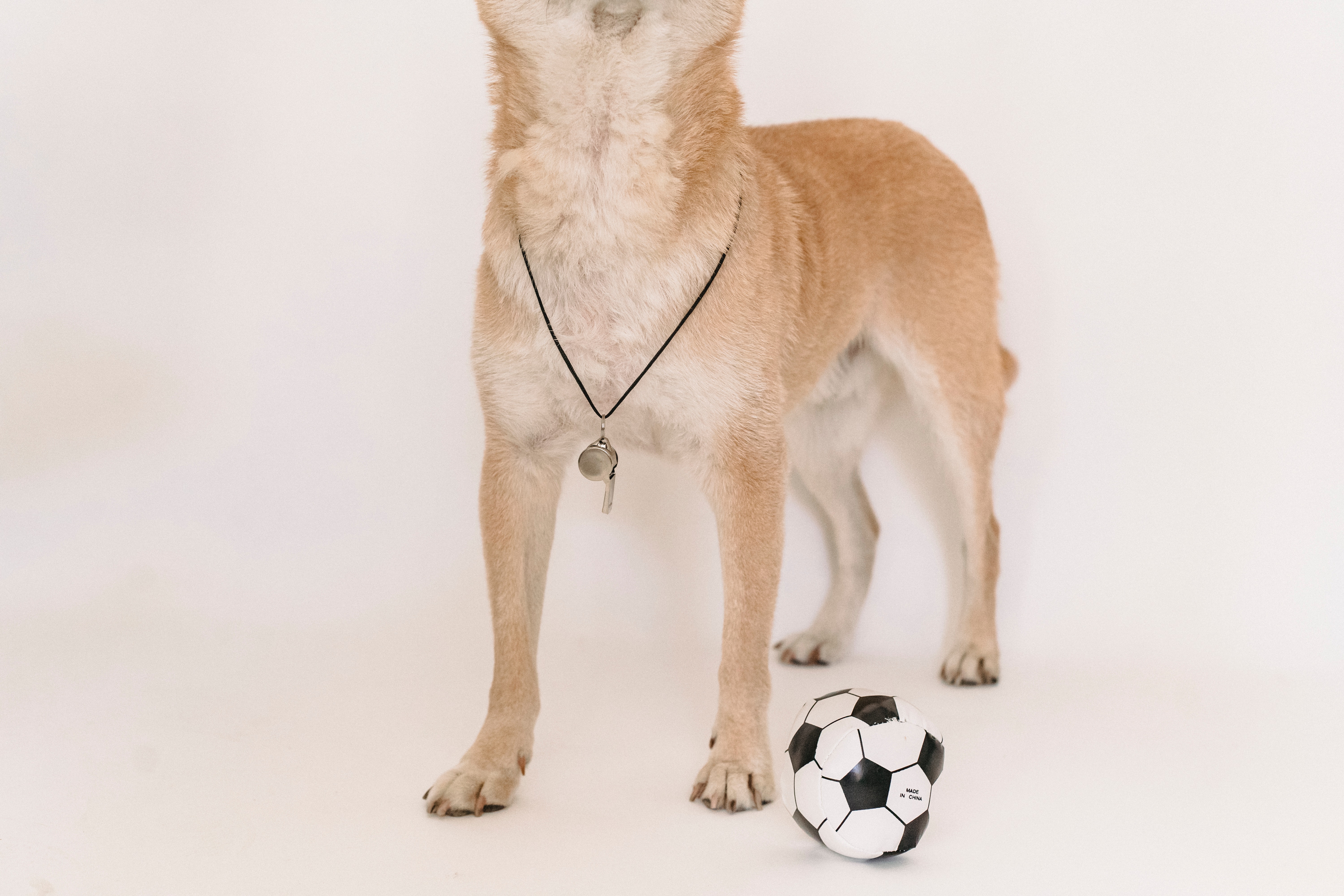- The Invention of a Whistle
- In Which Cases Would It Be Appropriate to Use a Whistle?
- What Whistle Types Can You Use?
- Why Do Trainers Recommend a Whistle as a Training Tool?
- Basic Principles of Whistle Training
- How to Train Your Dog to “Recall” Using a Whistle
- How To Train Your Dog To “Sit” Using a Whistle
- How To Train Your Dog To Stop Barking Using a Whistle
- Helpful Tips For Whistle Training
- Since a whistle is a very effective training device, some owners tend to use it too frequently to achieve faster and better results. Unfortunately, this approach has negative effects only. It may lead to stress or discomfort for your canine. A whistle as a training tool becomes ineffective.
- Is Whistle Training Safe?

Whistles are important dog training tools that have been preferred by professional trainers and owners as well. These devices are very efficient, as they help you train your dog different commands without constantly calling him/her or speaking too loudly. When used properly by dog owners, whistles are associated with positive stimuli, so that training becomes joyful and pleasant for their furry friends. If you are wondering if it would be a good idea to use a whistle for training purposes, what kind of whistle you can use and how to conduct proper training using this tool, this article is just for you.
The Invention of a Whistle
Dog whistles, known as silent whistles, were originally invented as a device that had to test the range of hearing by humans. Their inventor, Sir Francis Galton, noticed that dogs respond to the high frequency, generated by this device- up to 45 kHz. As the sound generated by whistles can cover large distances, this tool became very popular among handlers of hearing and hunting canines.
In Which Cases Would It Be Appropriate to Use a Whistle?
Whistles as training tools are very suitable for training when your dog partner finds it difficult to recognize or/and to fulfill verbal commands. Since the sound generated by the whistle is a separate sound, not related to the daily interaction with your fluffy friend, he/she is more likely to recognize it and to respond accordingly. Some handlers have to deal with more challenging and bad-behaved canines that refuse to follow verbal commands at all. If this is the case and your dog just decides to ignore your commands, you can try to use a whistle as a training device.
What Whistle Types Can You Use?
One of the most popular whistle types is the so-called “silent whistle”.
Silent Whistle
You might get confused by the name, as it suggests that no sound has been generated. We have to note, that this type of whistles is silent to humans only, due to the sound frequencies it produces. However, the frequencies can be adjusted, so that they are suitable for the dog and his/her hearing capabilities.
Dual-Tone Whistles
An advantage of this whistle is that it generates two tones. Handlers can evaluate which tone is more suitable for their dog according to the way the dog responds to each of them. Since two noises can be generated, this type can be used for teaching your dog two different commands.
Whistles with a Pea inside / Whistles without a Pea
Whistles with a pea or a small ball inside them are very suitable for advanced training, as handlers can generate different noises and train their dogs in a variety of commands. Every time you use the whistle, the pea/ball inside vibrates which allows you to generate the separate tones. Despite all the advantages of this type, it is not safe to be used in colder areas as the ball/pea may freeze by making contact with your saliva.
If you intend to use a whistle at lower temperatures we would recommend the second subtype- a whistle with no ball/pea inside. A disadvantage of this type is the lack of noise variations that can be generated.
In general, we would recommend that you use a non-silent whistle so that you can verify that the sound is clear enough, and it is not too loud or too low. Moreover, you will be able to monitor the reactions of your dog and make adjustments if necessary.
Why Do Trainers Recommend a Whistle as a Training Tool?
The first and most important advantage of this tool is that it can be used by professional trainers as well as by owners or family members. Since the sound generated by the whistle remains the same, it can be always recognized by the dog and associated with a certain command. That means that a dog learns to recognize a certain noise, and not a person who uses it. You or your family members can use a whistle to give your dog commands without confusing him/her.
As we mentioned at the beginning of the article, the sounds generated by a whistle can travel a distance larger than the distance traveled by a human voice. When you want to call back your dog partner while outside, you may want to use a whistle instead of screaming and get the attention of all passerby.
It is really important that the sound generated by a whistle is not emotion-related. In many of our articles, we discussed how good dogs are at feeling and recognizing their owner’s emotions. In cases when your emotions are overwhelming you can not handle them i.e. panic attack or anger, you may be unable to give your dog a command properly. In order for a training to be efficient, it should be conducted patiently, and it should not cause any stress or anxiety to your dog partner. Since a whistle-generated sound is considered “emotionless”, your dog can not get confused or stressed (unless you use the whistle too long or loudly).
Basic Principles of Whistle Training
We would like to give you some advice on how you could implement a whistle as a tool in your training.
First, you need to adjust the frequency. Then you can start using the whistle- blow it until your canine responds. That means that your dog is able to hear the sound. It is important that you use separate sounds for different commands i.e. - one sound for the “come” command, a different one for the “sit”, or the “stop” command. The commands, that you give your dog via whistle should be constant, and each sound should be associated with a certain command. Otherwise, your canine may get confused and be unable to understand what you expect him/her to do. In the beginning, you can use both verbal commands and whistle commands. Once your dog understands the whistle command and starts following it on a daily basis, you can stop using a verbal command and continue using the whistle command only. The regular rewarding with treats or toys (depending on what your dog prefers more), is crucial for the training success.
The three most common commands trained by a whistle are “Sit” “Recall” and “Stop”.
How to Train Your Dog to “Recall” Using a Whistle
We would recommend that you start the training process in a distraction-free room in your home. You need to prepare a lot of treats. First, you can wait a few minutes so that your canine can have his/her own time doing what he/she wants to do. Then you can try to use a whistle and give a command. Your dog may get interested in the sound and come to you. You need to praise and reward him/her.
You need to keep in mind that you do not have to force your dog to come or to beg him/her.
You can repeat the training several times. It is important that you keep the sessions short. Once your dog shows that he/she understands what you want him/her to do, and you feel more confident, you can conduct the training outdoor. You may want to start with places with low distractions. When your canine walks a few steps away from you, you can use the whistle. When he/she comes back, reward him/her. If you notice that your canine is not pretty sure whether to come back to you or not, you can move in the opposite direction to motivate him/her to come to you. Step by step you can increase the distance when you start using the whistle and recall your dog. When you feel comfortable enough you can conduct the training on places with more distracting factors. The training methods remain the same- every time your canine recognizes the sound and fulfills the command, you reward him/her accordingly.
How To Train Your Dog To “Sit” Using a Whistle
If you want to train your dog to sit down, you can try showing him/her a treat and holding it above his/her head. To be able to take a look at the treat, your canine is very likely to sit down. When he/she sits, you need to blow the whistle and give a treat. Repeat the sessions as long as your dog fully understands what you expect him/her to do and never forget to praise and reward him/her. However, you can decrease the amount of treats gradually.
How To Train Your Dog To Stop Barking Using a Whistle
If you want to train your canine to stop barking, you need to blow the whistle and to get the attention of your dog. Once your dog partner focuses on you, give a command (“stop” or “quiet”). When your dog fulfills the command, reward.
Helpful Tips For Whistle Training
Since a whistle is a very effective training device, some owners tend to use it too frequently to achieve faster and better results. Unfortunately, this approach has negative effects only. It may lead to stress or discomfort for your canine. A whistle as a training tool becomes ineffective.
A whistle is a training tool that helps you to get the attention of your dog. After that you need to provide the training carefully, using the proper voice, body language, and be very patient.
It is important, that your dog associates the whistle training with positive emotions only, so you may want to stop the training while your dog still enjoys it and not when he/she is already bored.
We would recommend that you do not give too many treats to your dog before going on a walk. Otherwise, he/she will be not motivated to come back to you on command. The treats that you give your canine as a reward should be small.
Is Whistle Training Safe?
If a whistle is safe for your dog depends on the way he/she responds to it. Your dog may ignore some noises or be unable to recognize them. We would not recommend whistle sounds for training fearful canines, as they may cause even more stress and anxiety.
You need to keep in mind that you should not blow the whistle too loudly and for too long.
In any case, you need to avoid direct contact with your canine’s ears, as the sound may be harmful to him/her.
If you are not sure how to use a whistle properly, you always can contact a professional trainer for advice.












